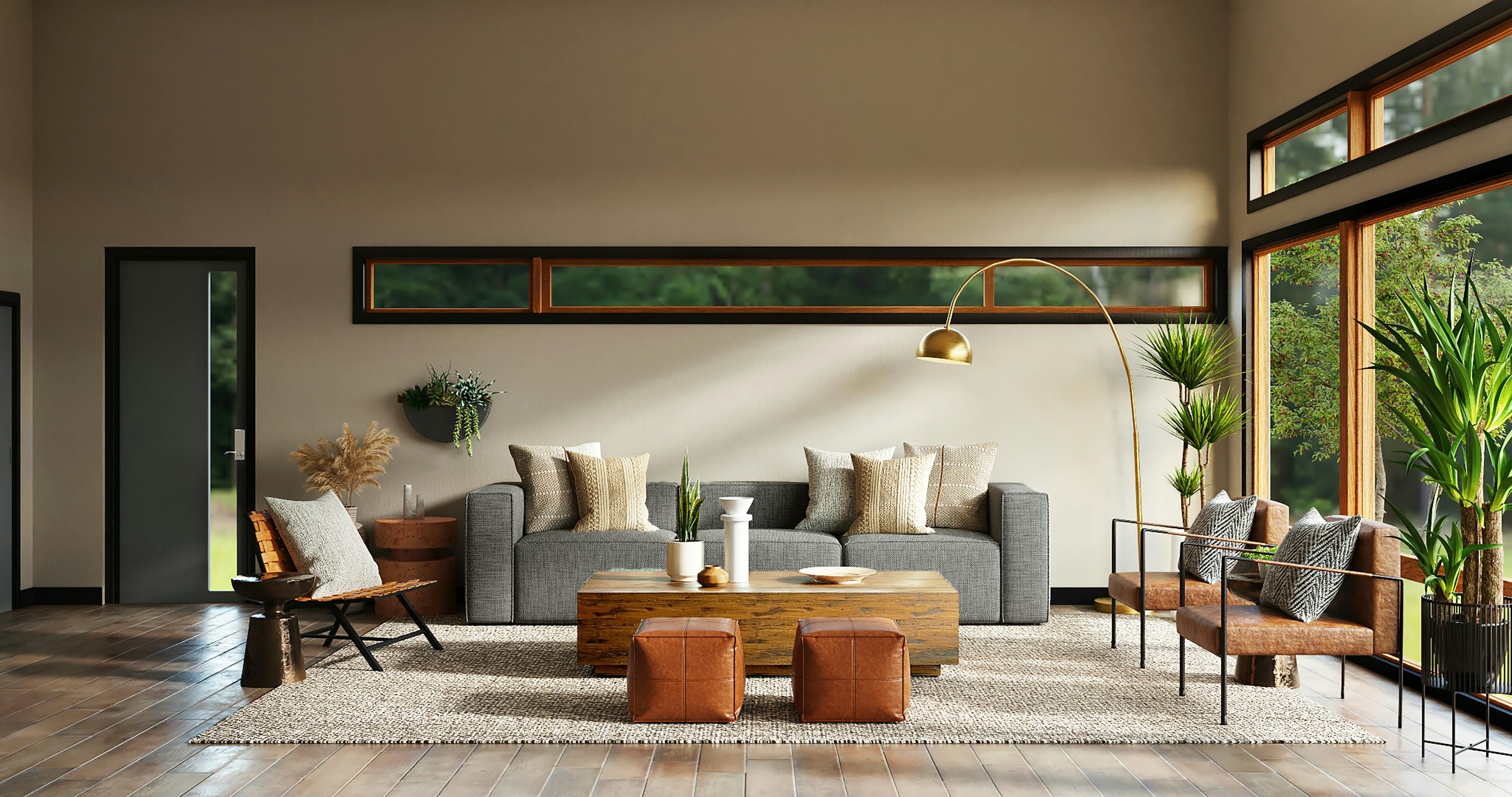September 26, 2025

Interior design has the power to transform how a home feels and functions. A well-designed space can appear spacious, calm, and welcoming, while poorly considered choices can make even the largest rooms feel cramped and chaotic. Many homeowners fall into the trap of overcrowding their spaces, choosing mismatched elements, or neglecting layout principles that support balance and flow.
The good news is that most design mistakes are fixable with practical adjustments. By identifying what contributes to a cluttered look and understanding how to remedy it, you can create a home that feels more organised, spacious, and aesthetically pleasing. This article explores the most common interior design mistakes that make homes feel cluttered and provides expert guidance on how to correct them effectively.
One of the most frequent mistakes is trying to fit too many pieces of furniture into a space. While the temptation is often to include everything for comfort and convenience, oversized sofas, excessive side tables, and bulky chairs can overwhelm a room.
How to fix it:
Even when a room isn’t overcrowded, mismatched proportions can create a cluttered look. For example, placing a tiny rug under a large sectional sofa or hanging small art pieces on a wide wall disrupts visual balance.
How to fix it:
Decorative objects add personality, but too many small trinkets, vases, or photo frames scattered across surfaces can feel messy rather than curated.
How to fix it:
Clutter often accumulates because items don’t have a designated place. Shoes by the door, piles of mail on the counter, and children’s toys spread across the living room quickly disrupt order.
How to fix it:
While dark tones can add sophistication, using them excessively in small or poorly lit rooms makes spaces feel confined and cluttered.
How to fix it:
Mixing too many design styles, colours, or materials without a unifying theme often results in visual clutter. A room may feel chaotic rather than eclectic if there’s no consistent thread tying it together.
How to fix it:
Furniture placement that interrupts the natural flow of movement through a room creates both physical and visual clutter. Navigating around coffee tables or squeezing past chairs makes a space feel cramped.
How to fix it:
Patterns and textures add depth, but when overdone, they can overwhelm the senses. For example, multiple patterned cushions, curtains, and rugs competing for attention will create a chaotic environment.
How to fix it:
Insufficient or poorly planned lighting can make rooms feel smaller and more cluttered. Relying solely on a single overhead light often casts harsh shadows and doesn’t highlight the best features of a room.
How to fix it:
Sometimes clutter is simply the result of holding on to outdated furniture, unused gadgets, or décor that no longer serves the space.
How to fix it:
Focus on multi-functional furniture, use mirrors to reflect light, and stick to a limited colour palette to create a sense of openness. Avoid filling every wall or surface.
Not necessarily. Dark colours can work beautifully as accents. The key is balance — pair them with lighter walls, reflective surfaces, and good lighting to prevent a heavy atmosphere.
Choose a base colour palette and stick to consistent materials and finishes throughout the home. Adding small variations within a set framework creates harmony without monotony.
Yes. While personal items like photographs and keepsakes add warmth, scattering them across every surface can appear messy. Display them in curated groupings or dedicate specific areas such as gallery walls.
It’s wise to evaluate your spaces annually. Over time, lifestyles and needs change, and what once felt functional may now seem cluttered. A yearly refresh helps maintain order and relevance.
Lighting significantly impacts perception. Well-lit spaces feel larger and more open. Using layered lighting, a combination of ambient, task, and accent sources highlights focal points and reduces the appearance of clutter.
Clutter in interior design often stems from well-intentioned but misapplied choices, such as overcrowding furniture, mismatched proportions, or an overload of decorative items. The result is a space that feels smaller, busier, and less inviting than it could be.
By addressing common mistakes and applying thoughtful fixes from rethinking scale and storage to improving lighting and colour balance, any home can achieve a cleaner, more harmonious look. The key is intentionality: every piece of furniture, accessory, and design choice should serve a purpose, whether practical or aesthetic.
Ultimately, a well-designed home is one that feels open, functional, and calming. With these expert tips, you can transform cluttered interiors into spaces that truly support comfortable and enjoyable living.
Ready to bring your home renovation or extension vision to life? At Milkov & Son Construction, we specialise in Architectural Design, Design & Building Process, Loft Extensions & Conversions, Extensions, House Refurbishments, and Interior Design. Whether it’s a single room makeover or a complete transformation, our expert team is here to guide you every step of the way. Contact us online or call +44 7951 625853 to start your project today.
